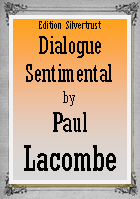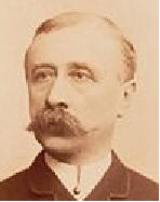Presents
Paul Lacombe
|
Mandolin!!, Cello & Piano (just to show how it sounds with cello, we do not have the mandolin part) |
 |
 |
Flute, Bassoon & Piano |
Dialogue Sentimental
For Flute or Violin, Bassoon or Cello and Piano
Paul Lacombe (1837-1927) was born in the town of Carcassonne located in the far south of France in the province of Occitan. He began to study piano with his mother and then entered the local conservatory. Subsequently, Lacombe studied composition with Bizet for two years by means of correspondence. Through the efforts of Bizet and Lalo, both of whom admired his music, his compositions were performed in Paris. Though Lacombe's music was well appreciated among fellow composers and musicians, it never gained a widespread popularity as he was not willing to leave his hometown of Carcassonne for Paris. A prolific composer with more than 150 works, including a fair amount of chamber music, which was composed during two distinct periods. The first from the late 1860s into the mid 1870s reflects the influence of Mendelssohn and Schumann. The second period from the late 1890s through the first two decades of the 20th century shows him to be au courant with the recent developments of the impressionist movement. In 1887 he was awarded Prix Chartier for his chamber music by the Académie des Beaux-Arts, of which he subsequently became a member. He was made a Chevalier of the Légion d'honneur in 1902.
The Dialogue Sentimental was published in 1917 when Lacombe was 80, and may well have been completed some years before. It is a short and lightly impressionist work which makes a fine choice for a shorter program piece or an encore. It was Lacombe himself and not his publisher who insisted the work was suitable for winds and piano, strings and piano or one wind and one string instrument and piano, and indeed as you can hear from the soundbites, he was correct.
Parts: $9.95